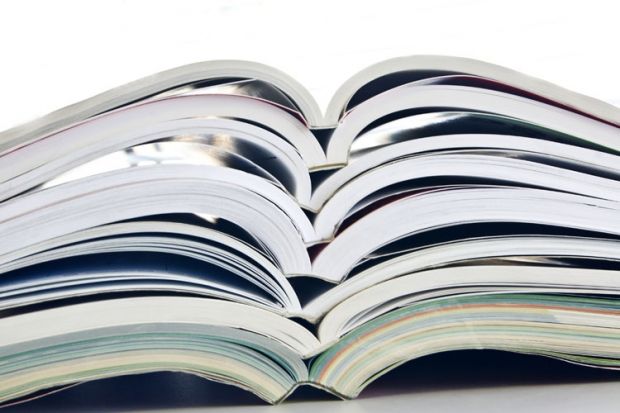According to the 2013 edition of Thomson Reuters’ Journal Citation Reports, published on Wednesday, 37 journals have been added to the banned list this year for having “anomalous citation patterns”.
This phrase has traditionally meant having an excessive number of self-citations. However, last year Thomson Reuters also began screening for journals that exchange large numbers of citations with other journals in a cartel-like arrangement, which it calls “citation stacking”.
Of the 37 journals added to the banned list this year, 14 were for the latter offence. Last year only three were deemed guilty.
Most journals remain on the banned list for two years, meaning that, in total 66 journals are currently denied an impact factor. This compares to 51 last year, when 26 journals were added to the list.
The current figure is a historic high, although the number of journals indexed by Thomson Reuters also grows every year.
In 2006, seven journals were added to the banned list, representing 0.1 per cent of the indexed total of 6,166. The 37 titles suppressed in 2012 equates to 0.3 per cent of the total of 10,853.
Impact factors represent the average number of citations garnered by articles published by a journal over the previous two years. They are often used as a measure of the quality of the journal, though critics often claim that the averages are often skewed by a few highly cited papers.
Even more controversially, individual researchers are often assessed by funding, hiring and promotion committees according to the impact factors of the journals in which they have published. In May a prominent group of journals, learned societies and funders, including the Wellcome Trust and the Higher Education Funding Council for England, called for this practice to end.
The journal with by far the largest impact factor, 153.459, is the cancer journal CA: A Cancer Journal for Clinicians. Second, with a factor of 51.658, is the New England Journal of Medicine, followed by Reviews of Modern Physics, with 44.982. Nature, with a factor of 38.597, is seventh overall, and the highest ranked of the general science journals.
Register to continue
Why register?
- Registration is free and only takes a moment
- Once registered, you can read 3 articles a month
- Sign up for our newsletter
Subscribe
Or subscribe for unlimited access to:
- Unlimited access to news, views, insights & reviews
- Digital editions
- Digital access to THE’s university and college rankings analysis
Already registered or a current subscriber? Login




